SPACE June 2025 (No. 691)

©Thomas Mayer
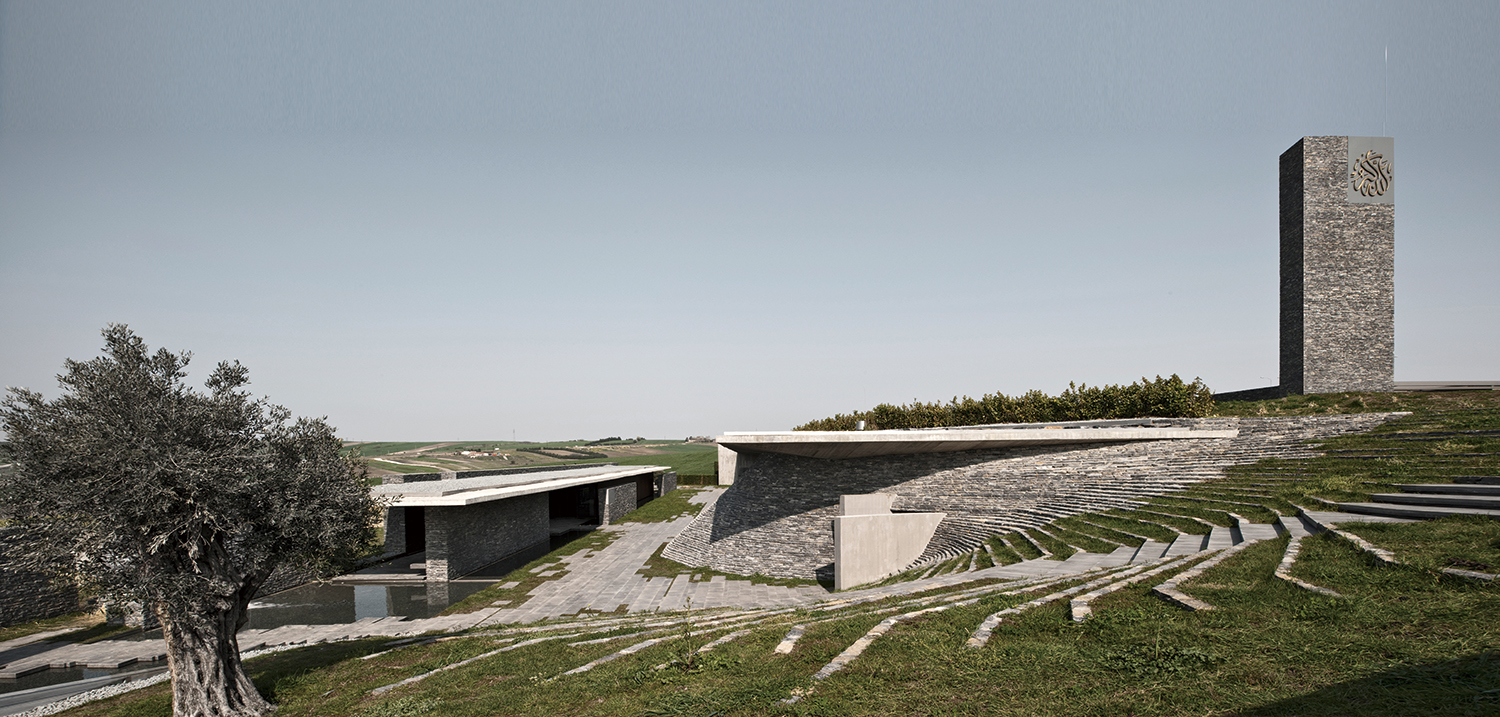
Sancaklar Mosque located in Büyükçekmece, a suburban neighbourhood in the outskirts of Istanbul, aims to address the issues faced when designing a mosque by distancing itself from current architectural discussions on form and placing its focus solely on the essence of religious space. The project site is located in a prairie landscape that is separated from the surrounding suburban gated communities by a busy street. The high walls surrounding the park on the upper courtyard of the mosque depict a clear boundary between the chaotic outer world and the serene atmosphere of the public park. The long canopy stretching out from the park becomes the only architectural element visible from the outside. The building is located below this canopy and can be accessed via a path leading from the upper courtyard through the park. The building blends in with the topography and the outside world is left behind as one moves through the landscape, down the hill and in between the walls to enter the mosque. The interior of the mosque is a dramatic and awe-inspiring place to pray and be alone with God. The slits and fractures along the qiblah wall enhance the directionality of the prayer space and allow daylight to filter into the prayer hall. The project constantly plays off of the tensions between the man-made and natural. The contrast between the natural stone stairs following the natural slope of the landscape and the thin reinforced concrete slab spanning over six metres to form the canopy helps enhance this dual relationship.

©Thomas Mayer
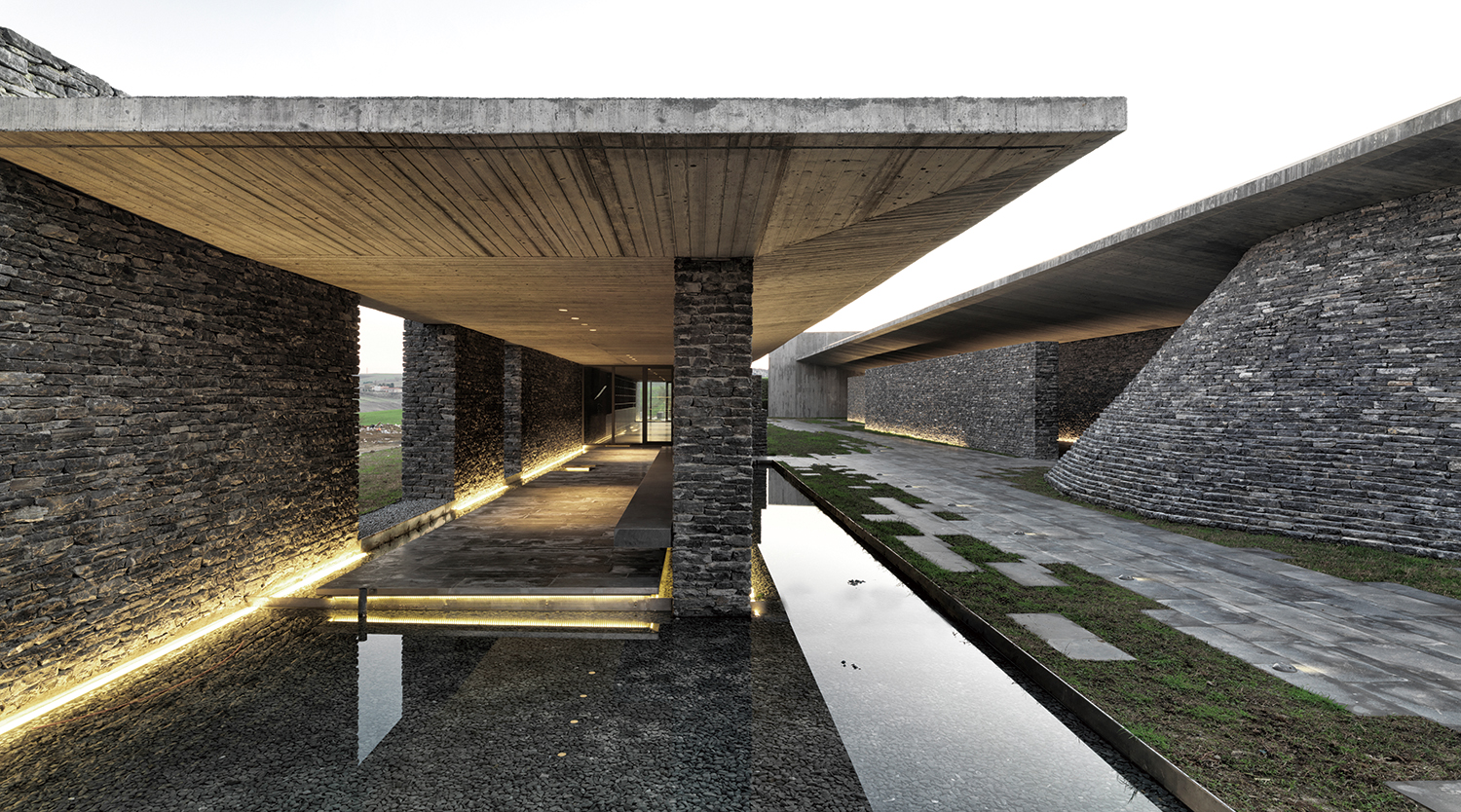
©Cemal Emden
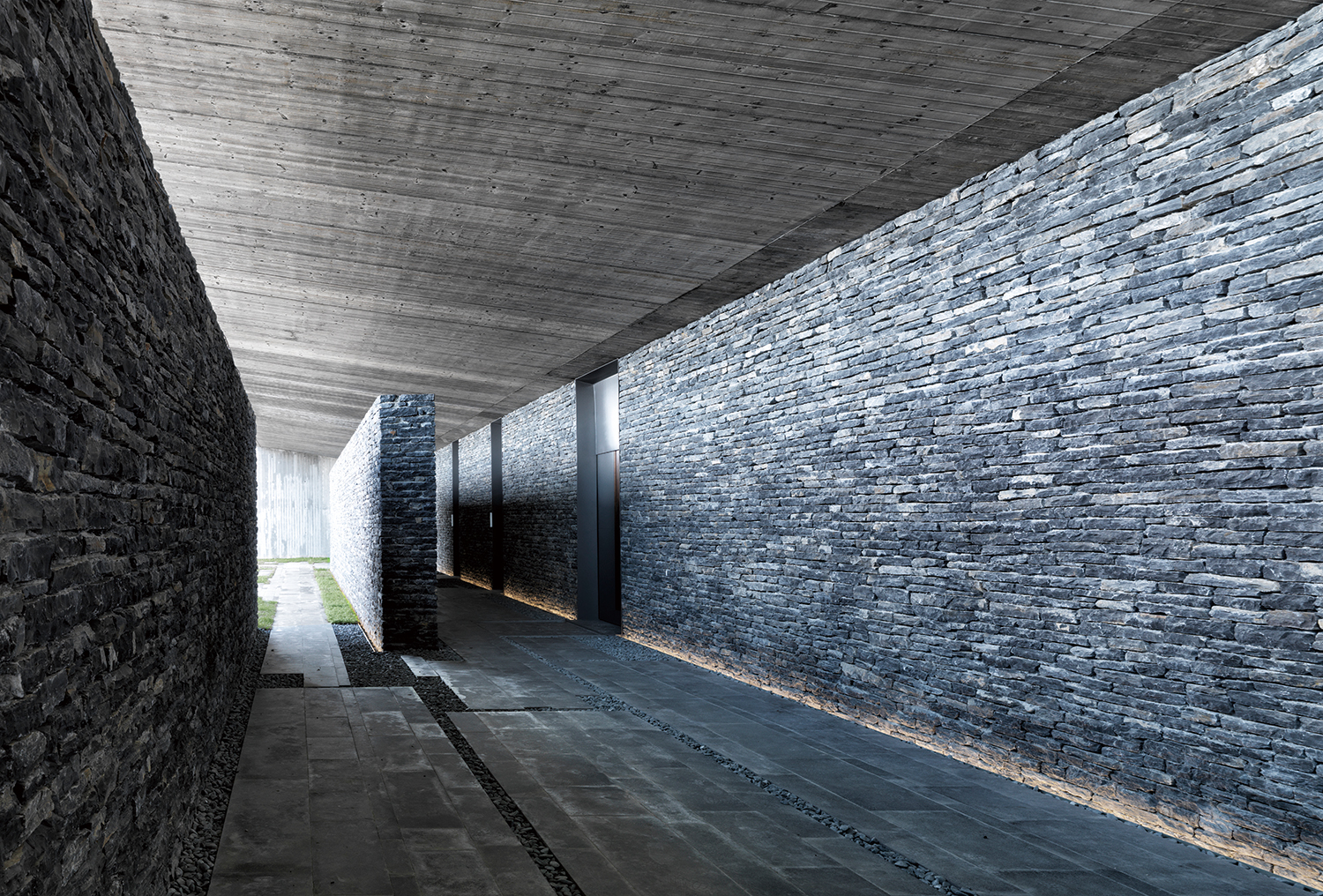
©Cemal Emden
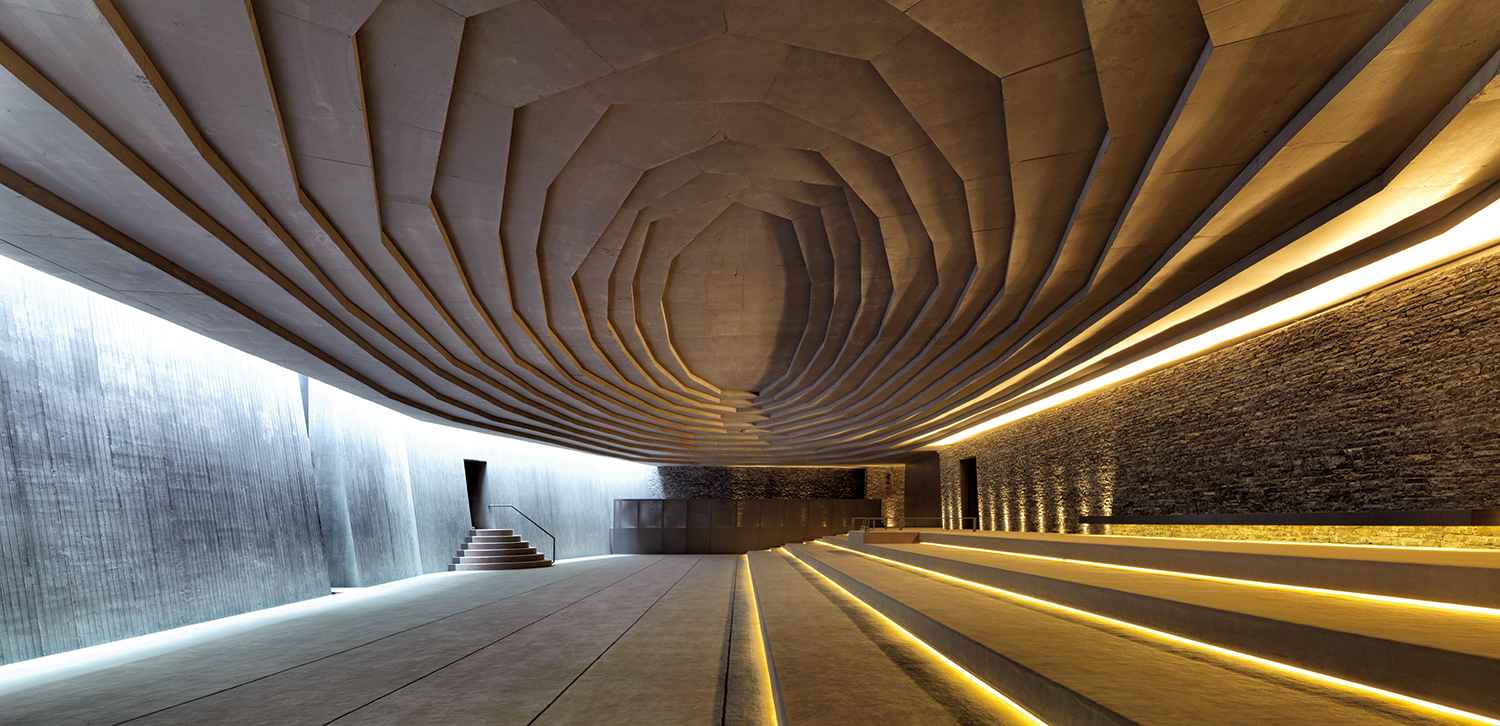
©Cemal Emden
 Section
Section
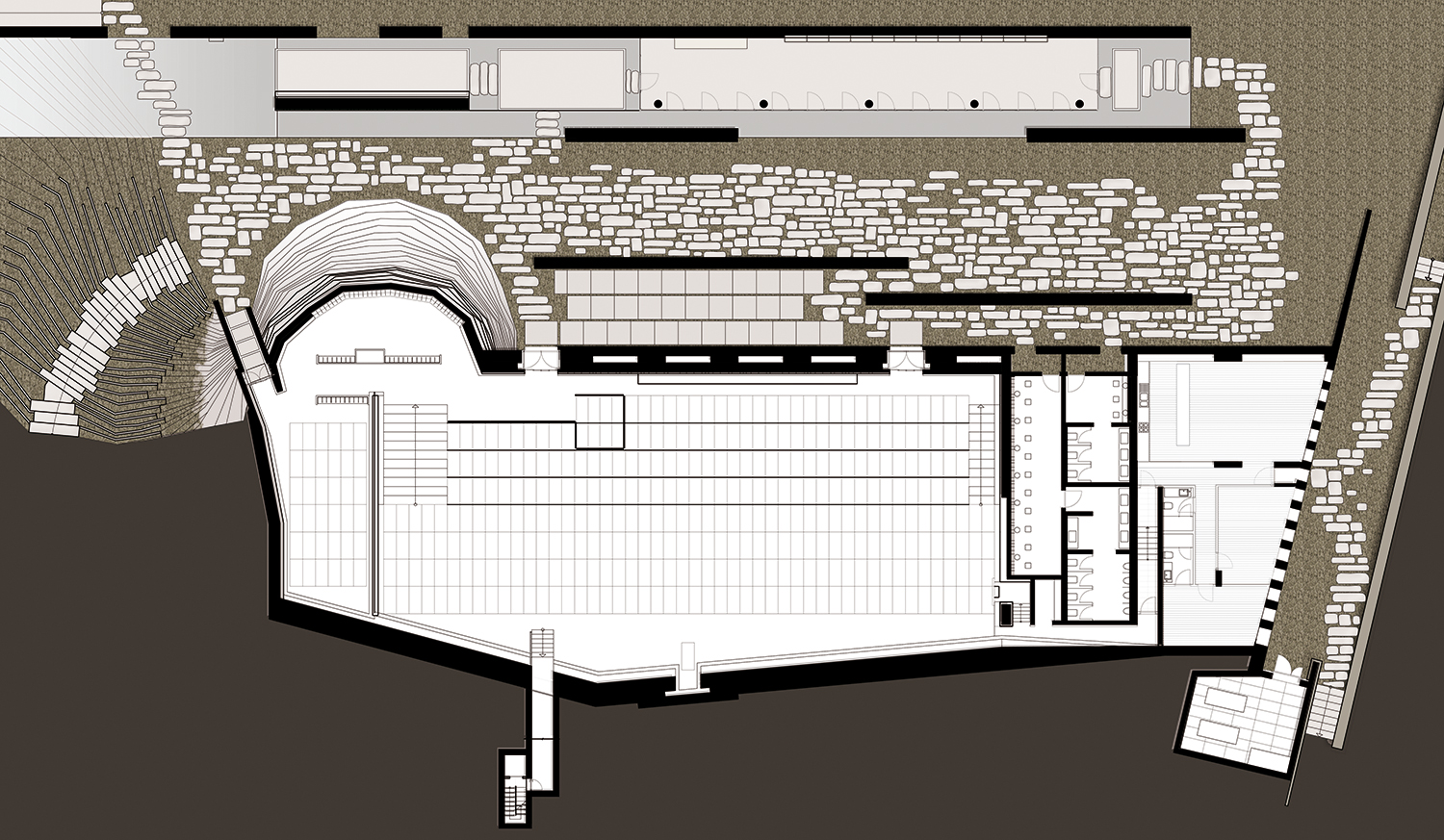
Plan
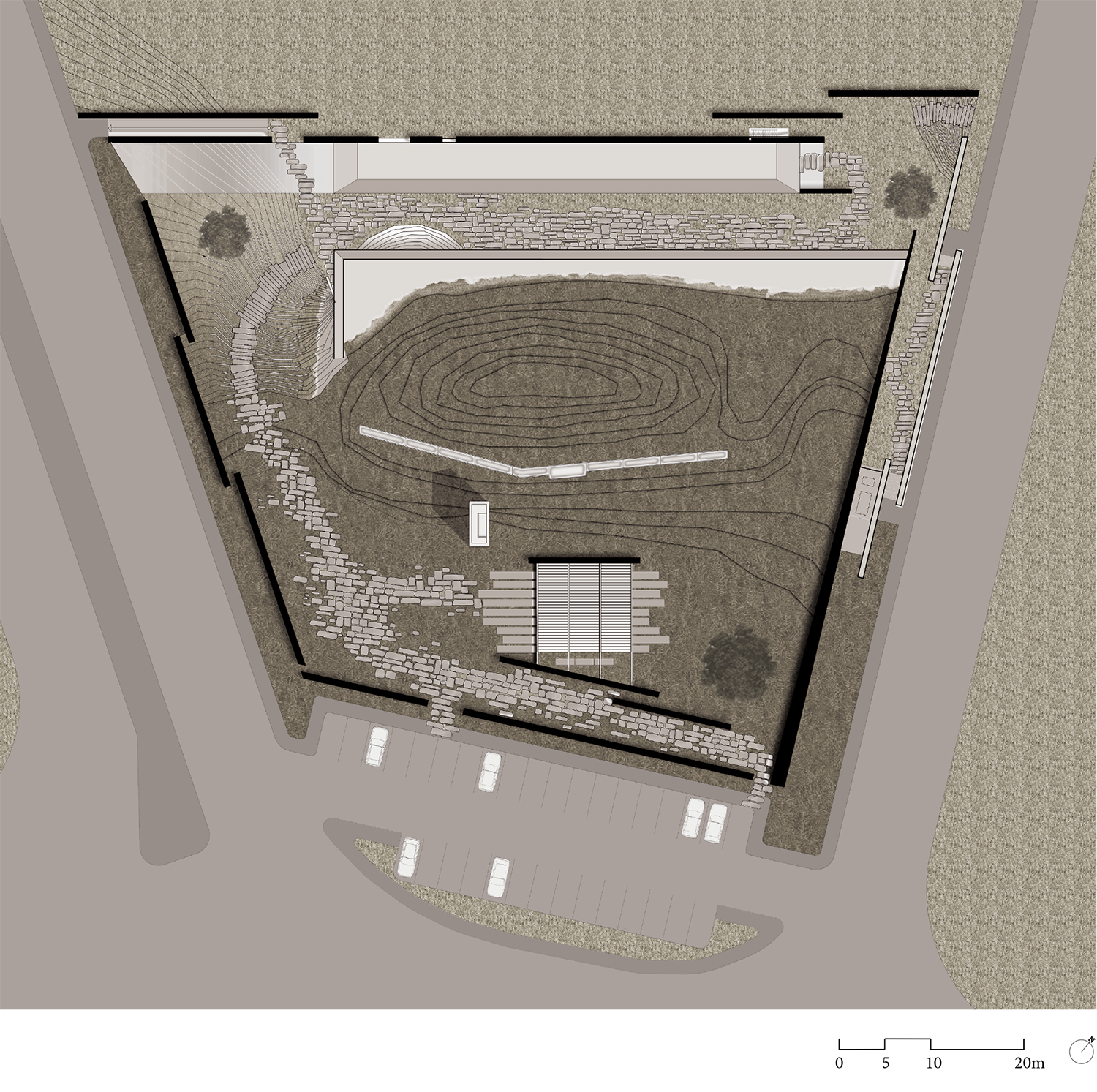
Site plan
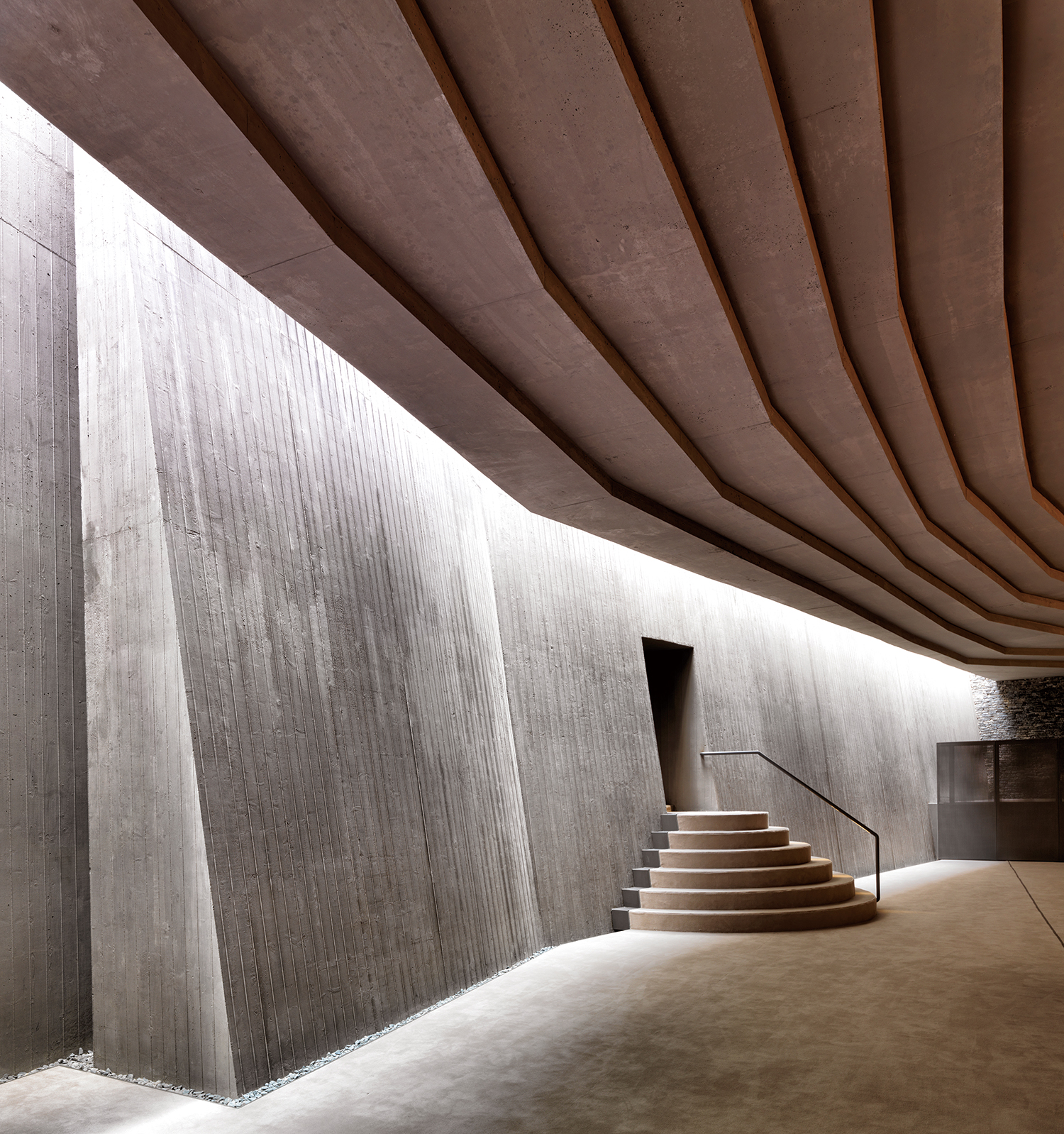
©Cemal Emden
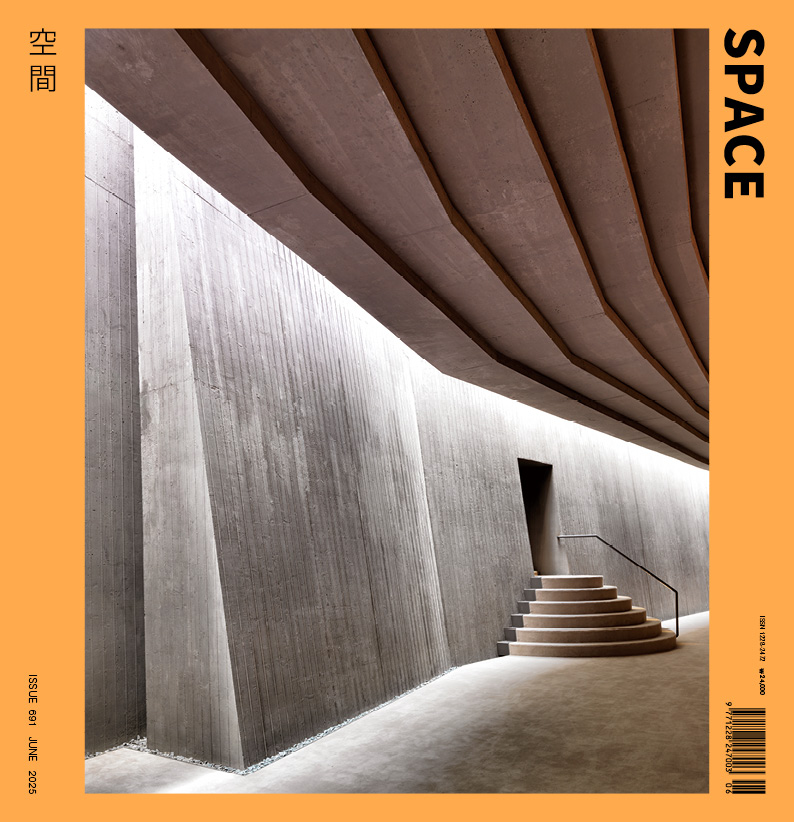
EAA (Emre Arolat)
Istanbul, Türkiye
religious building
7,365m²
1,200m²
1,200m²
31
6.8m
16.2%
16.2%
RC
local slate stone
exposed concrete
Balkar Engineering
Setta Engineering
HB Teknik
2011
2013
Sancaklar Foundation
EAA, Modesa





